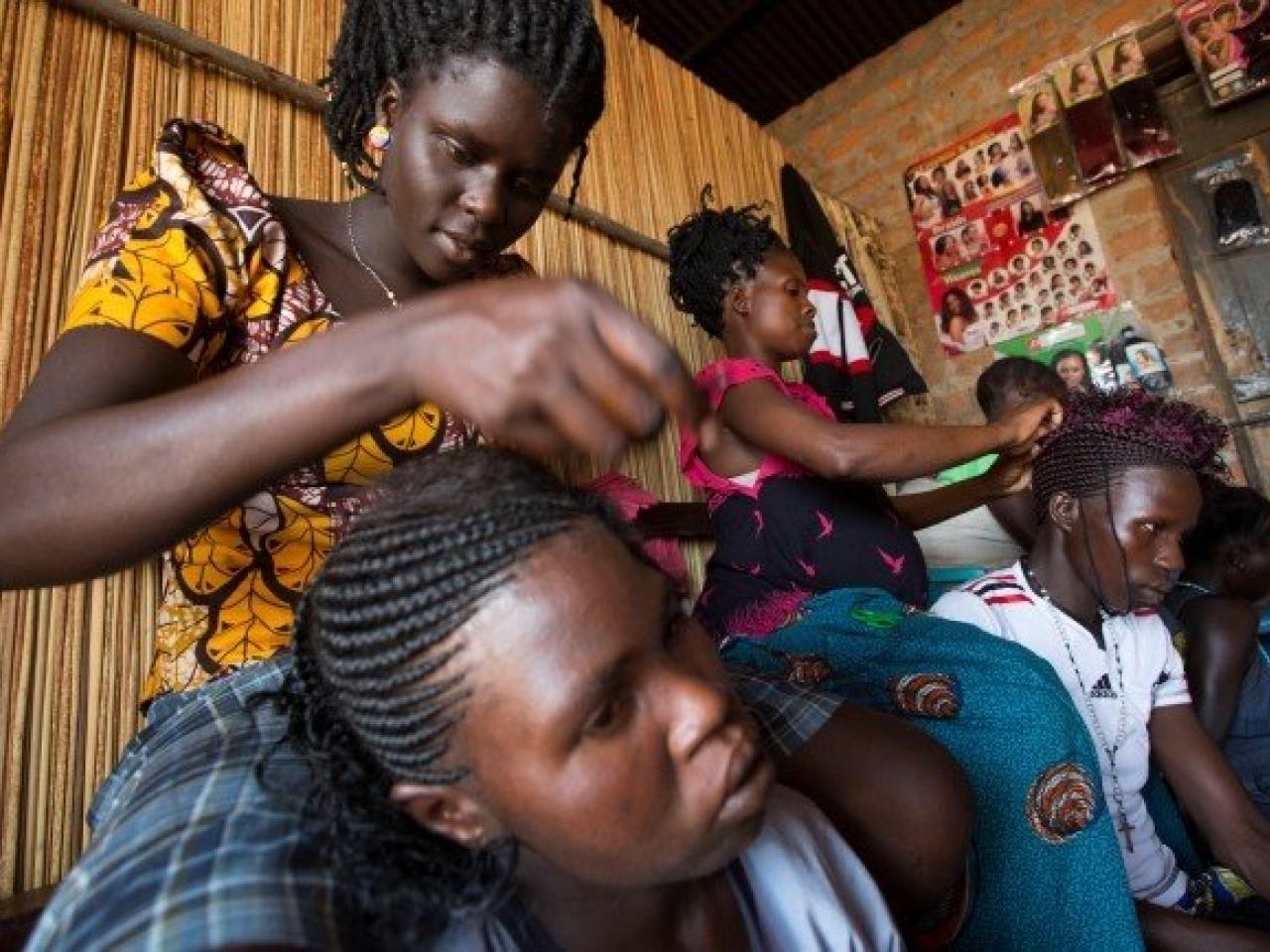Five myths about female genital mutilation
Female genital mutilation (FGM) is recognized internationally as a violation of women’s human rights. Yet an estimated 200 million women and girls worldwide have undergone genital cutting, which involves injuring female genitalia for non-medical reasons. It does profound physical and psychological damage, can result in life-long pain and sometimes, death.
On the International Day of Zero Tolerance for Female Genital Mutilation, Spotlight Initiative is calling for an end to FGM.
Below are five common misconceptions about FGM. Through a better understanding of the practice and its consequences, we can help break the silence and advocate for an end to FGM once and for all.
1. FGM doesn’t happen where I live
“There are still a lot of misconceptions about FGM, like it's practised by ignorant Africans and people ‘over there’ who are uneducated,” says UN Women Goodwill Ambassador Jaha Dukureh. Dukureh underwent FGM in Gambia when she was one week old and supports other survivors through her non-profit, Safe Hands For Girls.
It was a sentiment echoed by Maryum Saifee at a Spotlight Initiative-supported exhibition in New York highlighting the stories of FGM survivors. “I was born in Texas, I don’t fit the profile of an FGM survivor,” Saifee told the crowd. “I was on summer vacation in India and my aunt lured me into her basement clinic with the bribe of a chocolate bar. I was seven years old.”
Recent UN data indicates that FGM is practised all over the world - in 29 countries, including some communities in Australia, Canada, New Zealand, the United States, the United Kingdom and parts of Europe. It transcends geographic and socioeconomic boundaries.
2. FGM is performed for religious reasons
Though it’s often perceived as a religious practice, FGM has no religious foundation. Motivations range from the psychosexual (controlling women’s sexuality) to cultural, aesthetic and economic. In some regions, FGM can be a prerequisite for the right to inherit, improve a woman’s marriage prospects and provide a source of income to practitioners.
The good news: many traditional authorities and religious leaders are working to end the idea that FGM is a religious requirement. Ousmane Fakoro Traoré is an imam in the village of Tongoye, Mali, who does just that. "As a religious leader, I participated a lot in raising awareness in the community every Friday before the prayer,” he says.
“We are very happy to have abandoned this practice, which is so harmful to our children,” adds N’golo Traoré, the adviser to the village chief of Tongoye.
3. FGM rates will decline on their own
FGM causes immense physical and psychological suffering – including chronic pain, infection, haemorrhaging and childbirth complications. It can also increase the risk of contracting HIV. While awareness of the damage caused by the practice is growing, so too is the number of girls at risk. The number of girls who have undergone FGM threatens to rise from 4.1 million in 2019 to 4.6 million by 2030 due to population growth in countries where it is most common.
But attitudes are changing. Young people aged 15 to 19 in countries where female genital mutilation is prevalent are less supportive of continuing the practice than older generations - and they’re making their voices heard.
4. FGM is only performed in secret and in rural areas
While some of the health complications arising from FGM can be caused by non-sterile instruments or practitioners without medical training, the procedures are also performed by medical professionals – even in places where it’s illegal. Twelve-year-old Nada Hassan Abdel-Maqsoud recently bled to death at a private clinic in Manfalout in Egypt after her parents, uncle and aunt took her for the procedure.
Data from 24 countries found that 18 per cent of girls under the age of 15 who had undergone FGM had the procedure performed by a healthcare provider. In Egypt, as many as 75 per cent of female genital mutilations are performed by medical practitioners. Unfortunately, this lends an air of legitimacy to a practice that causes severe harm and suffering and violates women’s human rights. There is no “safe” form of genital mutilation.
5. There’s nothing we can do to end FGM
“The reason FGM has persisted so long, even performed by doctors and educated folks, is because it’s surrounded by silence. We don’t talk about it afterwards,” says Saifee. “This particular issue, I’ve seen it change in my community. I’ve had cousins say, ‘I really didn’t know that this happened.’
“The federal law was recently overturned here in the States, so now we have the movement on a state level to make sure that all 50 states have banned FGM." The federal United States law banning FGM was deemed unenforceable in 2018 when a judge dropped charges against a Detroit doctor accused of mutilating the genitals of multiple girls. He determined that criminal law should be left to the state.
Still, progress is a being made. Kenya has committed to ending FGM by 2022, while Egypt has made FGM a federal crime punishable by up to 15 years in prison.
Spotlight Initiative supports a range of programmes to prevent FGM and better serve survivors. The Initiative will continue to work with policy makers, religious leaders, women’s movements, and activists to ensure that every girl and woman lives a life free from violence.
Photo: © UNICEF Mali/Keita/2019. Compiled using information from UNFPA and UN Women.

